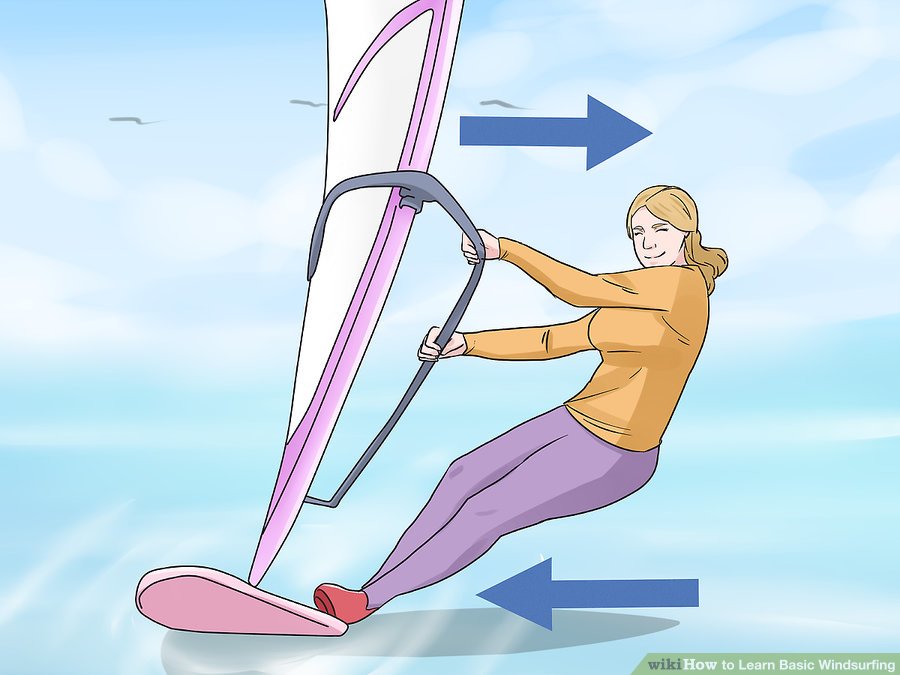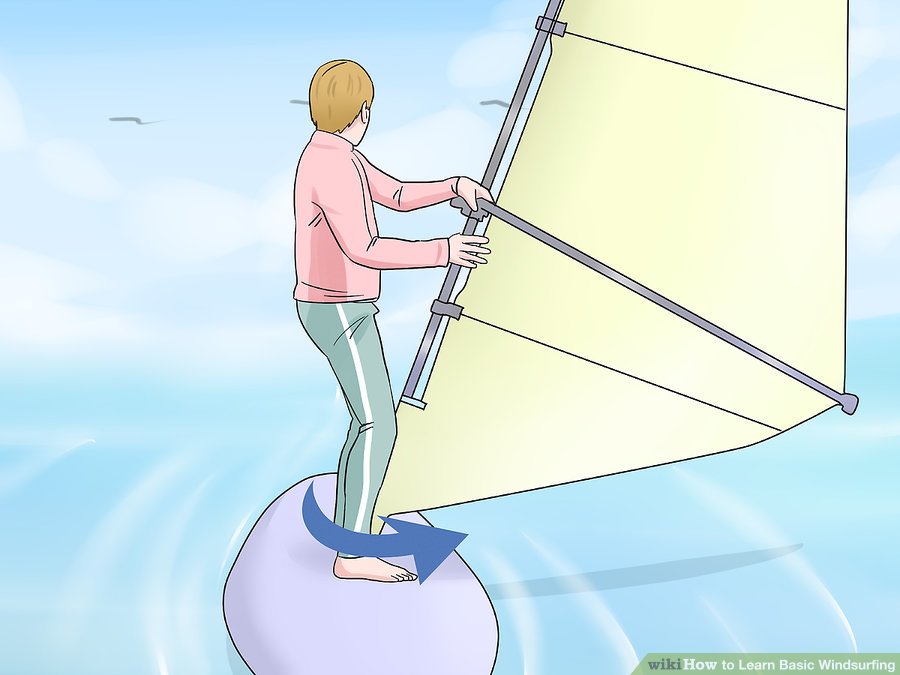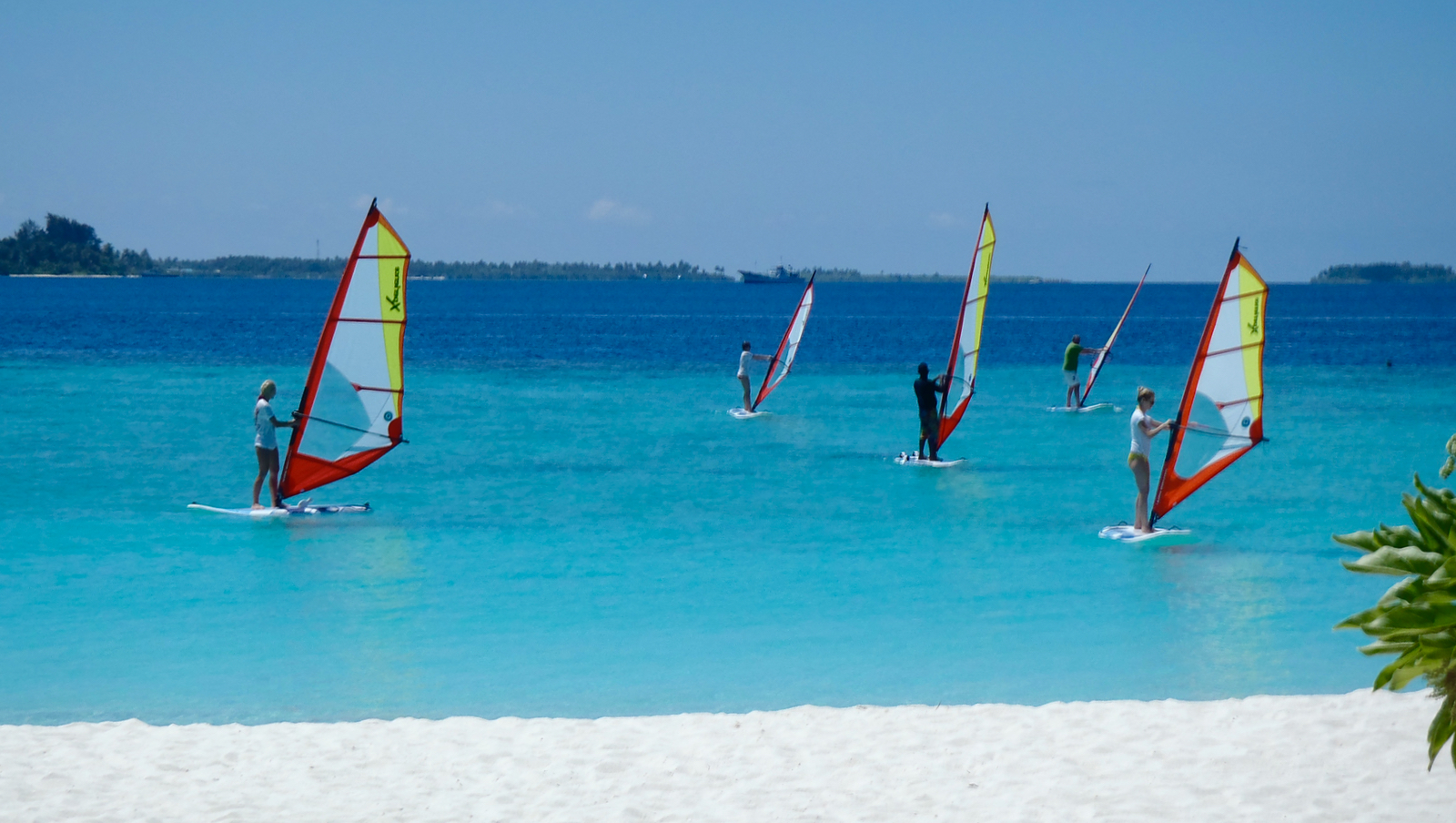Are you wondering what you will learn during the Windsurfing Course? Would you like to understand how a windsurfing course is scheduled?
Here below you can find the Windsurf Course Learning Steps.
Windsurfing is considered an extreme sport and can be potentially dangerous. Learn how to windsurf with a Windsurfing Course, avoid the do by yourself.
Windsurf Course Learning Steps, Part 1: Windsurfing Theory
- Windsurf Material knowledge,
- Common knowledge of law,
- Windsurf Sailing theory,
- Windsurf Safety, nature and environment,
- Knots and their use.
Windsurf Course Learning Steps, Part 2: Windsurf Practice
- Rigging,
- Knots,
- Raising up the sail,
- Basic position,
- Setting up the board,
- Starting,
- Windsurf Waterstart,
- Steering,
- Emergency stop,
- Returining to the starting point under normal weather conditions,
- Windsurfing in different directions,
- Tack,
- Jibe,
- Fast tack, fast jibe
- Beach Start with windsurf,
- Windsurfing with Harness,
- Leeride, Crewfirst,
- Sailrotation,
- Planing / Glading,
- Windsurfing with footstraps,
- Power Jibe.
Steps of Learning Basic Windsurf
1 – Windsurf Kit: Board and Rig
Knowing your windsurf kit is really important to understand the required equipment for windsurfing. The Windsurf kit is divided in two (2) parts: the board and the rig. The board is like a surfboard where you stand on and where the rig is connected. The board has one or more fins and daggerboards (in some models) underwater.

2 – Windsurf Daggerboard Must Be Down
When starting to Windsurf, the daggerboard must be down at all times. You can do this by pulling the big nob towards the rear, or stern, of the board to lower and towards the front, or bow, to raise when packing away.

3 – Windsurf Footstraps, Deck Plate, Boom, Must and Sail
Know that there are also foot straps and a deck plate to hold the rig on. The rig consists of a sail, mast and boom. A line run from the boom to the bottom of the mast and is used to pull the sail up. The boom often has lines hanging from it in order to connect the harness.

4 – Windsurf Basic of Starting: Push the board out into deep water
Push the board out into deep water until the fin is clear of the bottom.

5 – Windsurf Basic of Starting: sail is downwind in respect of the board
Get a sense of the wind direction and move the board so that the sail is downwind in respect of the board.

6 – Windsurf Basic of Starting: clamber onto the board
Swim or walk to the upwind side and clamber onto the board. Stay on your knees and grab the mast line, without pulling up the sail yet.

7 – Windsurf Basic of Starting: Raise to your feet on the windsurf board
Raise to your feet on the windsurf board. Try and practice to be stable – rock back and forth on your feet to get a feel for it.

8 – Windsurf Basic of Starting: Bend your knees and pull the sail up
Bend your knees slightly and pull the sail up from the water with the uphaul (mast line). Try to keep your back and body somewhat upright. If you feel your lower back starting to ache, you are bending over too much.

9 – Windsurf Basic of Starting: Take hold of the mast with both hands
Take hold of the mast with both hands and let it swing. This is called the “safety” or “control” position: control and no power

10 – Windsurf Basic of Starting: Practice steering
Practice steering (called Center of Effort Steering) in the “safety” position. With the mast straight up tilt the mast to your left. Your body should transfer this imbalance(the center of effort of the sail is not balanced with the center of lateral resistance of the board) to the board and make the board turn(or spin) clockwise. Tilt the mast to the right and the board will turn(or spin) counterclockwise(anticlockwise). The stronger the wind and the further you tilt the faster the board will turn(or spin). In a stiff breeze you may be sailing very slowly at this point. Another steering description is as you tilt the mast to the stern the board will head up in to the wind. This is also described in the turning section of this doc. Tilting the mast to the front makes the board bear off from the wind.

11 – Windsurf Basic of Starting: Start Moving
Start moving. Look and see which side the bow of the board is in relation to you, and place your lower hand on the boom so the mast is leading the sail towards the bow (front). When you feel ready, transfer the second hand to the boom. Don’t let the sail pull you down. The mast should be perpendicular to the board, so lean back and keep the arms straight.

12 – Windsurf Basic of Starting: Pull the boom to accelerate or let it out to slow down
Pull the boom with the stern wards hand (the back hand) to accelerate or let it out to slow down. Keep your feet behind the mast foot, with the toes of the front foot facing forwards.

13 – Windsurf Basic of Starting: Stop and Relax
Stop and Relax! If you need to stop, return to the safety position, or drop the boom if it is safe to do so. Make sure it goes in front of you, and bear in mind you will get very tired if you have to keep on picking it up!

14 – Windsurf Turning: Tilt the mast to turn
Tilt the mast, from the safety position, towards the stern to turn the nose of the board upwind or towards the bow to turn downwind.

15 – Windsurf Turning: Step around the mast to get to the other side
Step around the mast, as the nose comes around, to get to the other side. Now you can sail away! This principle works also while sailing: tilt the mast forwards and back using the boom to adjust your course!

16 – Windsurfing: Enjoy Windsurf
Enjoy Windsurfing!


